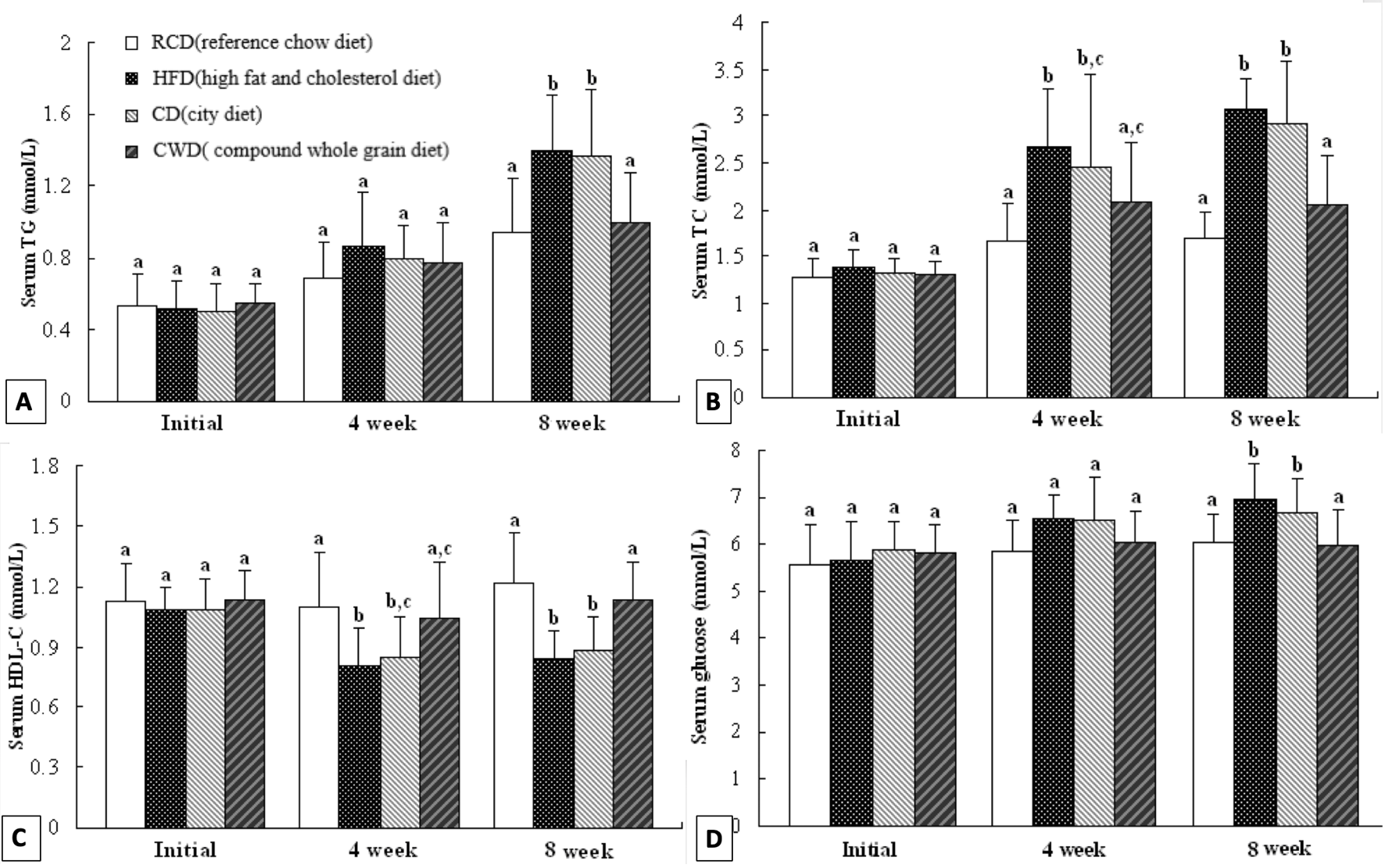Protective Effect of Compound Whole-Grain on High Fat and Cholesterol Diet-Induced Obesity and Lipid Accumulation in Rats
Protective Effect of Compound Whole-Grain on High Fat and Cholesterol Diet-Induced Obesity and Lipid Accumulation in Rats
Hong Zhang1, Shu-Fen Han2, Jing Wang1, Shao-Kang Wang1, Gui-Ju Sun1 and Cheng-Kai Zhai1, *
Effect of compound whole-grain on serum lipid profiles and glucose levels in rats fed high-fat/cholesterol diet. Each value represents the means with their standard deviations for ten animals (n = 10 for each group). Bars without a common superscript letter indicate significant differences among groups (P<0.05). (A), TG, triacylglycerol; (B), TC, total cholesterol; (C), HDL-C, high-density lipoprotein cholesterol; (D), glucose. For abbreviations, see Table I.
Effect of compound whole-grain on protein expression of SREBP-1c and PPAR-γ in liver and epididymal adipose tissues of rats fed high-fat/cholesterol diet by western blot. The intensity of the bands was quantified by densitometric analysis and normalized with corresponding β-actin (n = 5 for each group). For abbreviations, see Table I.
Effect of compound whole-grain on relative mRNA abundance of FAS (A) and ACC (B) in liver tissue of rats fed high-fat/cholesterol diet. The steady-state mRNA concentrations of FAS and ACC were quantified with real-time PCR and 2-△△Ct values were calculated to obtain fold expression levels. GAPDH mRNA levels were similarly measured and served as a reference control for mRNA quality and quantity. Each value represents the means with their standard deviations for five animals. Bars without a common superscript letter indicate significant differences among groups (P<0.05). For abbreviations, see Table I.













